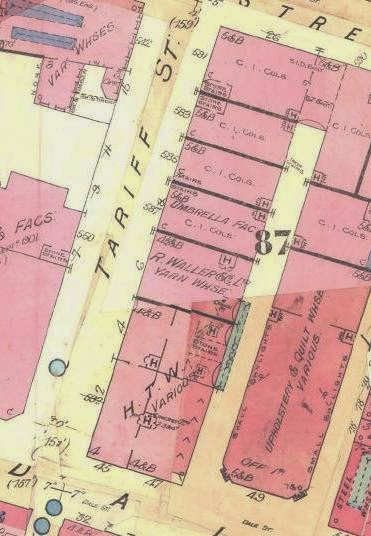I wish there was more to mark the life of George Green, “farm labourer” who died in a “fatal accident at Chorlton-Cum-Hardy” on Tuesday January 18th, 1853.
 |
| Fatal Accident, 1853 |
But to date all I have is a thirteen-line report tucked away on page 6 of the Manchester Guardian six days after the “fatal accident”. *
It jostled for space, with theatre reviews, reports on burglaries, a murder, the deliberations of the Manchester Poor Law Guardians and news of “Egyptian Antiquities in the Natural History Museum".
So, a poor testament on a man’s life.
There is no indication of his age, whether he had a family or if anyone mourned his death.
And despite popular misconceptions about the past, it is remarkable that men, even as apparently “humble” as George Green farm labourer should have left nothing else to mark his life.
 |
| Barlow Hall and Samuel Dean's Barlow Hall Farm, 1845 |
Usually there will be an entry on a census return, a listing in a rate book or after an 1837 an official record of a marriage or death.
But so far there is nothing, which highlights that simple truth that what has survived of many of our ancestors is a lottery. He may have been born before it became compulsory to register a birth, may never have married and somehow, I have missed the record of his death.
And unless the parish register of where he was born and where he may have been baptised have been digitized looking for him is almost impossible.
.jpg) |
| Farming near Barlow Hall Farm, circa 1900 |
Likewise, he may never have rented a property in his own name, and so will not appear in a rate book.
All of which means he is lost in the shadows.
That said the small thirteen-line report reminds us that in the 19th century inquests in to sudden or violent deaths in Chorlton were held in the Horse and Jockey on the green.
In 1847 it was there that a jury judged on the murder of Francis Deaken along with several investigations into infanticide. **
While the brutal murder of Mary Moore who lived in Chorlton but died violently in Whalley Range was heard in the Red Lion in Withington.
We also know that Mr. Green worked for Samuel Dean who farmed 300 acres which was centred around Barlow Hall Farm. The Dean’s employed a number of “farm servants” some of whom lived in the farmhouse with the family and others in outhouses nearby.
Farm servants would be hired for the year and so it is possible that George began work after the 1851 census which would explain why he failed to be recorded on the census two years earlier.
 |
| Barlow Woods, circa 1900 |
Nor should we ignore that simple fact that agricultural work could be dangerous. Leaving aside the suggestion that he had been drinking and was “intoxicated” just as now there were many accidents waiting to happen to farm workers.
I won’t give up on Mr. Green.
A search of the burial records for St Clements’ Church might throw up something as might a look for the original inquest deliberations.
And during the search through the past it remains the case that what can’t be found suddenly does pop up.
After all I came across the report of the fatal accident by chance while looking for something else.
Well, we shall see.
Location; Barlow Hall Farm
Pictures; Fatal accident, Manchester Guardian, January 23rd, 1853, Barlow Hall Farm, 1845, from the Tithe map of Chorlton-cum-Hardy, farming somewhere out on the fields belonging to Barlow Hall Farm, undated from the collection of Tony Walker, Barlow Woods, circa 1900, from the Lloyd Collection
* Fatal accident, Manchester Guardian, January 23rd, 1853
**Simpson, Andrew, The Story of Chorlton-cum-Hardy, 2012
































%2Bcrop1.jpg)







.jpg)








